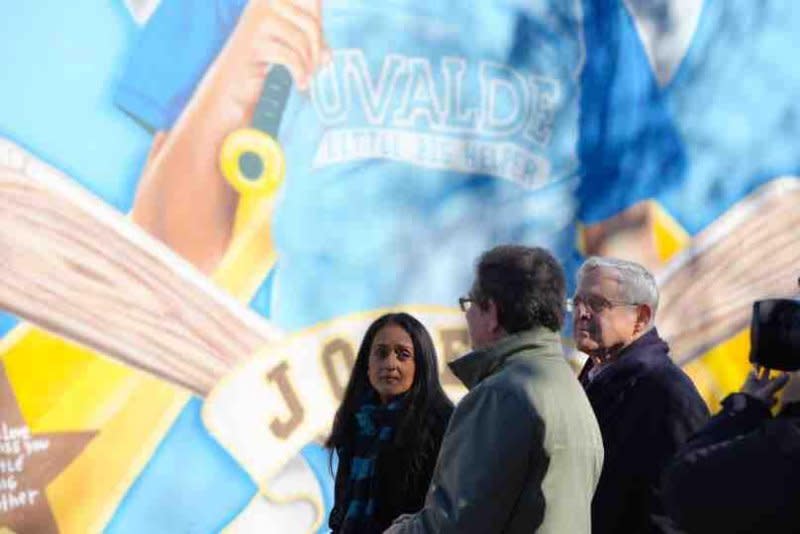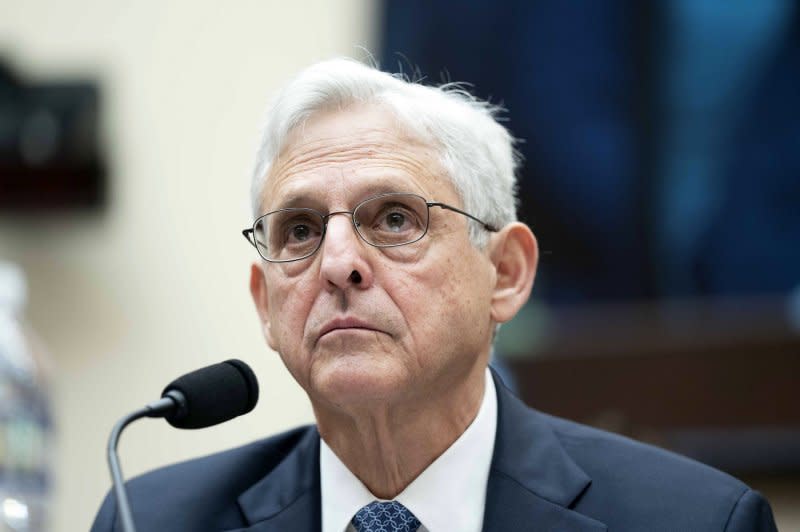Justice Department report calls Uvalde police reponse a 'failure'

- Oops!Something went wrong.Please try again later.
Jan. 18 (UPI) -- Delays caused by a lack of leadership, training and tactics led to a police response "failure" in the 2022 mass shooting in Uvalde, Texas, Attorney General Merrick Garland said during a news conference Thursday.
"The law enforcement response at Robb Elementary School on May 24, 2022, and in the hours and days after, was a failure that should not have happened," Garland said, while detailing the findings of the U.S. Justice Department's critical incident review of the tragedy.
Garland Wednesday visited the Healing Uvalde Mural Project in the city with a population of just over over 15,000. The collection of 21 murals honor the lives of the 19 children and two teachers who were killed in the second deadliest school shooting in U.S. history.
"As I told families and survivors last night, the department's review concluded that a series of major failures, failures in leadership, in tactics, in communication, in training and in preparedness were made by law enforcement and others responding to the shooting at Robb Elementary," he said Thursday.
"As a consequence of failed leadership, training and policies, injured and scared students and teachers remained trapped in the classroom with the subject waiting to be rescued."

The 600-page review gives a detailed account of the mass shooting, which saw more than 370 officers from local, state and federal law enforcement agencies respond to Robb Elementary.
Within minutes of the first gunshots, 11 officers from the Uvalde School District and Uvalde Police Department arrived inside the school but quickly withdrew after taking gunfire. Two officers were hit by shrapnel caused by gunshots. Only a single officer further attempted to enter the classroom before pulling back behind cover.
"After 11:40 a.m., no more attempts to enter the rooms were made until 12:48 p.m., more than an hour later," Garland explained Thursday.
The delayed police reponse came under fire almost immediately after the shooting.
Friends and family members of the victims have been vocally critical of the police response, recounting disorganization and delays of officers entering the building.
Garland acknolwedged Thursday that teachers and students "were trapped in a room with an active shooter for over an hour as law enforcement officials remained outside."
Officers had self-deployed to the school in "overwhelming numbers" but were left waiting "for leadership decisions about how to proceed."
The Justice Department's review was conducted at the request of former Uvalde Mayor Don McLaughlin and details how "survivors shared that they heard officers gathered outside the classrooms while they waited (for rescue)."
Police did not re-attempt to make entry in to the classroom despite knowing people had been shot inside. Garland recounted one officer's testimony that he knew his wife, a teacher at the school, has been shot inside the classroom.
"They (students) were still waiting as broadcasts went out on officers' radios that a student trapped inside room 111 had called 911 at 12:10 p.m. to say that the student was in a room full of victims. That student stayed on the phone with 911 for 16 minutes," Garland said during the news conference.
"As the victims were trapped and waiting for help, many of their families were waiting outside the school growing increasingly concerned about why law enforcement had not taken action to rescue their loved ones."
It wasn't until "75 minutes after the first officers arrived on the scene, officers finally entered room 111," Garland said Thursday.
A 77-page report released by a Texas House Committee in July of 2022 listed "systemic failures and egregious poor decision making" by nearly everyone involved, which resulted in a failure to protect staff and students.
Thursday's review by the Justice Department follows the same narrative, criticizing law enforcement for transitioning away from treating the incident as an active shooter situation and toward a barricaded subject. That diverted priorities toward evacuating the rest of the building rather than dealing with the main threat.
"Had law enforcement agencies followed generally accepted practices in an active shooter situation and gone right after the shooter to stop him, lives would have been saved and people would have survived," Garland said Thursday.
"The priority of law enforcement must be to immediately enter the room and stop the shooter with whatever weapons and tools officers have with them."
Today, Attorney General Merrick Garland and Associate Attorney General Vanita Gupta visited the "Healing Uvalde Mural Project," which consists of 21 murals that honor the lives of the 19 children and two teachers who were tragically killed on May 24, 2022. pic.twitter.com/1viOMrytzL— U.S. Department of Justice (@TheJusticeDept) January 18, 2024
The report said the delay "provided an opportunity for the active shooter to have additional time to reassess and reengage his deadly actions inside the classroom."
"It also contributed to a delay in medical interventions with the potential to impact survivability."
Officers waited approximately 77 minutes before forcing their way inside the elementary school where they shot and killed the 18-year-old suspect in a brief exchange of gunfire.
"During that period, no one assumed a leadership role to direct the response towards the active shooter, provide situational status to responding officers, establish some form of incident command, or clearly assume and communicate the role of incident commander," the report said.
Lt. Mariano Pargas, the acting police chief on the day of the shooting, resigned from his position in November of that year. Pargas was one of the first officers to respond to the scene and had faced heavy criticism for his lack of quick action.
"None of the law enforcement leaders at the scene established an incident command structure to provide timely direction, control, and coordination to the overwhelming number of responders who arrived on the scene," according to the report.
"The most significant failure was that responding officers should have immediately recognized the incident as an active shooter situation, using the resources and equipment that were sufficient to push forward immediately and continuously toward the threat until entry was made into classrooms 111/112 and the threat was eliminated," the report reads.
"Their loved ones deserved better," Garland said Thursday.

